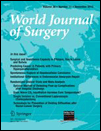High Risk of Biliary Fistula After Isolated Segment VIII Liver Resection
Abstract
Background
For tumors deeply located in segment VIII (S8), right hepatectomy (RH) often is thought to solve the issue of technical accessibility. Yet, the common existence of an associated underlying diseased liver raises the question of parenchymal-sparing resection.
Methods
From 2002 to 2011, 34 patients underwent isolated S8 resection, and their operative and postoperative characteristics were compared to 34 matched patients who underwent RH for lesions located in S8.
Results
Indications and preoperative characteristics were comparable between the two groups except for larger tumors in RH patients compared with S8 patients (48 vs. 40 mm; p = 0.001). Achieving S8 resection required significantly longer clamping time (45 vs. 37 min, p = 0.011), more additional biliostasis because of obvious biliary leak (65 vs. 18 %, p < 0.001), and subsequently increased application of sealant material (56 vs. 9 %, p < 0.001) compared with RH. The overall complication rate was similar between the two groups (59 vs. 62 %, p = 0.804), although a trend toward a higher rate of biliary fistula was observed in S8 patients (20 vs. 6 %, p = 0.07). Routine CT scan performed on postoperative day 7 found significantly more subphrenic collections in S8 patients compared with RH patients (53 vs. 9 %, p = 0.003). On pathological examination, surgical margin width was comparable between the two groups.
Conclusions
Anatomical S8 resection remains a technically demanding procedure with an elevated risk of postoperative biliary fistula but allows achieving adequate carcinologic resection. Increasing consideration for parenchymal sparing resection should lead to favor this approach as a treatment of choice for small and medium-sized tumors located in this segment.




